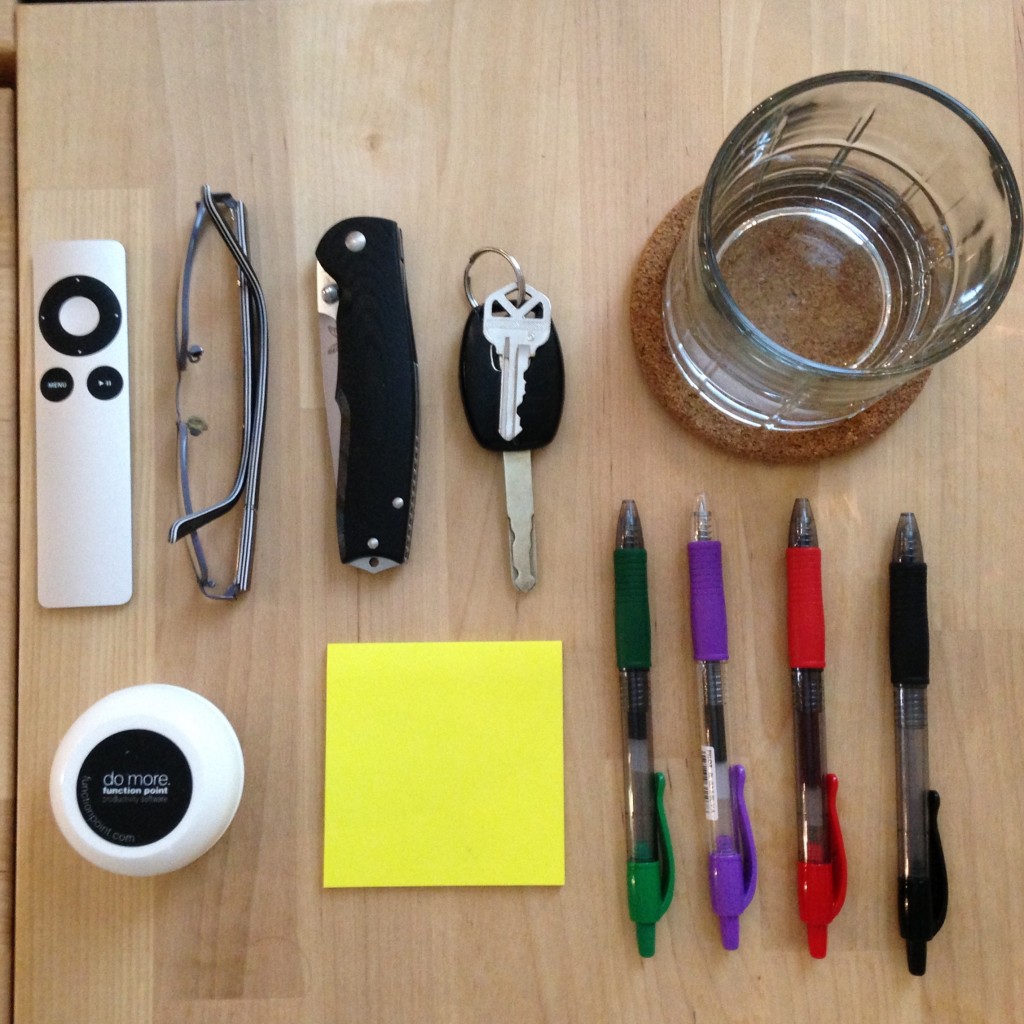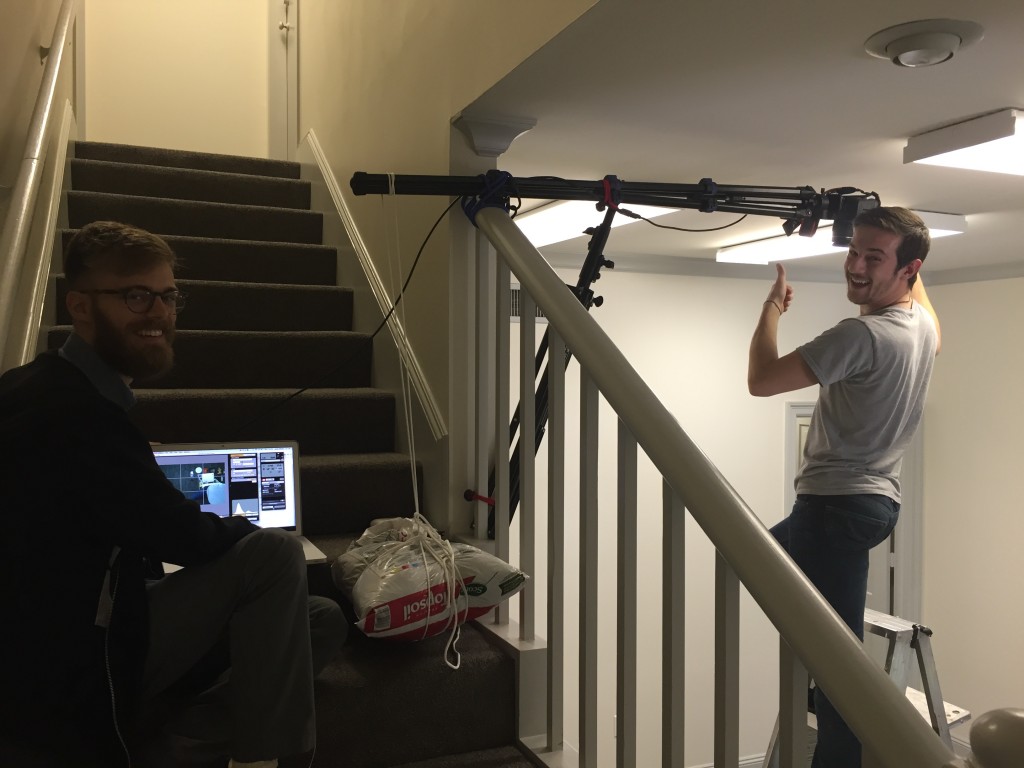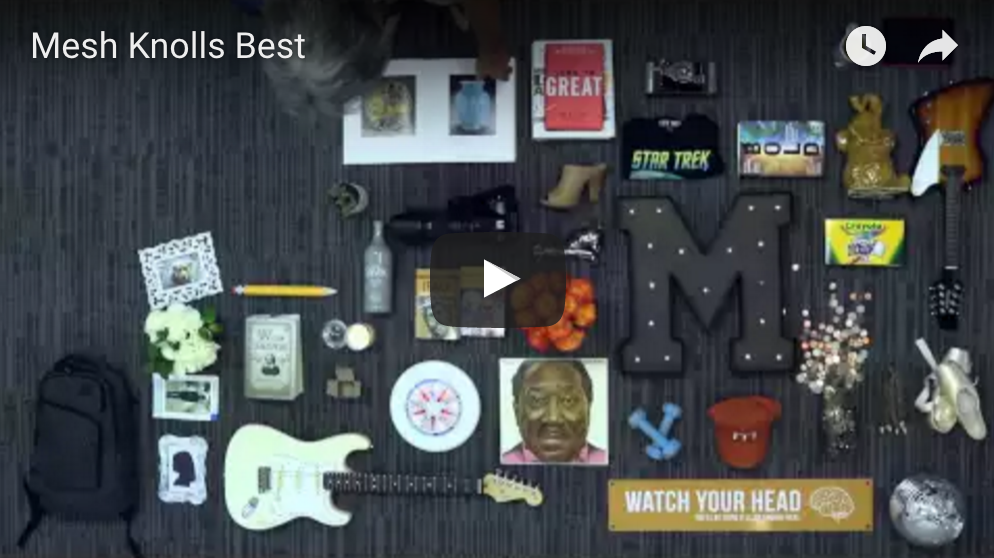When our fearless leader (Taylor) came up with the idea of shooting a short video of all of the things that inspire us laid out in a grid, I (Jacob) realized that what he was referring to was called knolling. Here’s where I admit that I’m that guy who has been obsessed with knolling for years. Even my desk is knolled. #notashamed

For those of you who aren’t familiar with knolling, it’sthe process of arranging related objects in parallel or 90 degree angles as a method of organization (learn more). Though the term has been around since 1987, it’s become popularizedwith slight variationson social photo-sharing sites likeInstagramandPinterest.
Anyway, Taylor asked me to rig up a set that would allow us to shoot this video without scaffolding or a camera crane. So rigged it, I did.

After assessing the situation, I (right) quickly enlisted the help of Chase (left), one of our designers, to help me construct this behemoth.
Step 1: ballast it.Since the stairwell was the closest thing we had to helping us get the height we needed, the next step was just figuring out how to get the camera extendedout. I had a tripod that we could mount the camera to which turned out to be exceedingly helpful since we could adjust the composition with the tripod’s built-in tilts and pans.
We figured that we could bungee it to the stairwell’s banister if we had some way to offset the weight. It would have to be a lot heavier than the camera to account for the distance it would be extended. Brooke, our Director of Finance, came in clutch with a big bag of potting soil and some rope. Ingenious right? We tied up the potting soil and lashed it to the feet of the tripod in the stairwell. Even with all of that weight, we found the camera was still sagging significantly.
Step 2: brace it.Thankfully, I had a lot of my lighting equipment stashed in the room from a recent shoot, so I grabbed a lightstand, wedged it between the stairwell and the tripod’s legs and bungeed it off as well. Brace in place.
Step 3: tether it.Finally, since the camera was butted up against the ceiling, it was impossible to know exactly what our composition looked like because we couldn’t see the LCD screen. With a 9 foot cable and Canon’s EOS utility software, we tethered the camera to my laptop. This allowed us to virtually look through the camera lens as well as have full control over the camera’s settings and shutter release.
Here’s a short video of the set up:
After dialing in the settings and fine tuning the composition, we taped off the floor where our talismans of inspiration would soon be knolled. We had everyone bring a handful of items that inspired them and set to work arranging them in a beautiful knoll. All that was left was to shoot it! We had a blast and in the process were reminded of why we do what we do: because we love it. We love the creativity, the inspiration and, most importantly, the people who drive it all. What can I say… MESH knolls best.
